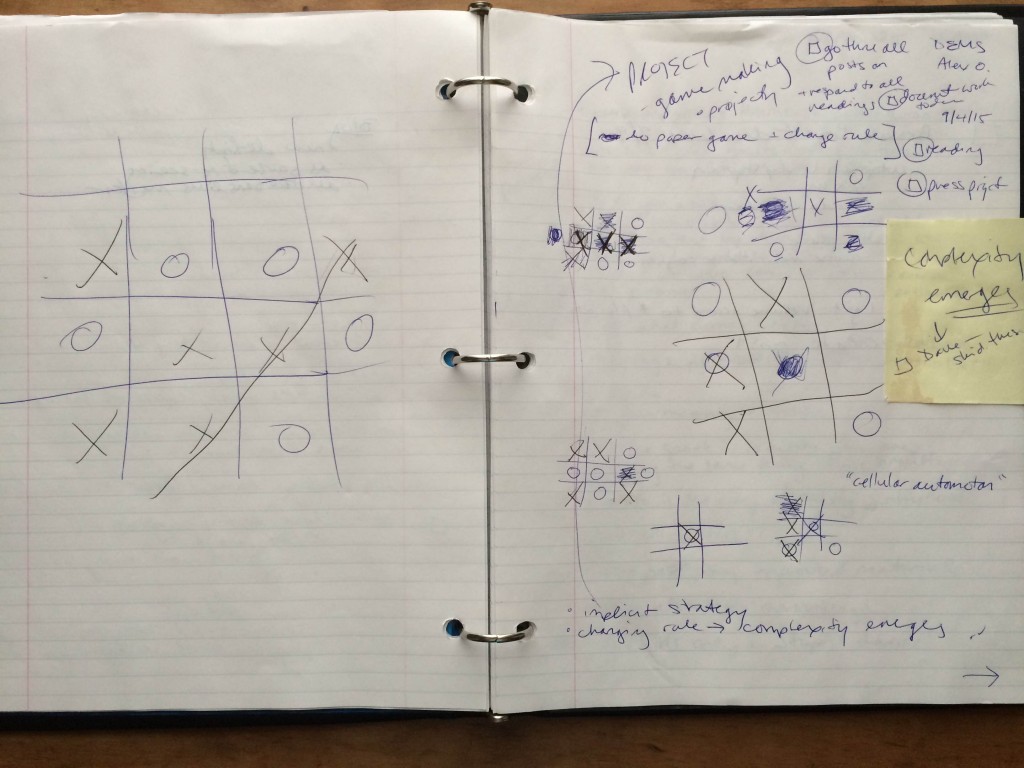Disruption
Posted: September 6, 2015 Filed under: Anna Brown Massey, Paper & Pen Leave a comment »Instruction: play a “paper & pen” game, and change one rule
Partner Jonathan and I chose tic-tac-toe.
Reading from left to write, we played “normally”, with J. initiating with an “x” in the center square. The game was a draw, so we experimented with our first rule:
[As seen on the lefthand notebook page in the photo]
- When a game is a draw, players may together add a new row and new column, rendering the board a 16 square-space. (As I write I am aware there is likely unique nomenclature for “board” or “paper” games, e.g. a word for “board” that is more inclusive.) As part of this rule, a win is still gained by achieving 3 contiguous squares–not four.
–> Jonathan immediately won. We tried again,
… and got into an immediate discussion about the place of human behavior and computer-logic. As we build a new version of a game, are we building it so that there are multiple possible outcomes even for a computer, or are we depending on the human flaw of making error in not choosing the best square as a foundation of our new evolution? This came to light as we realized we needed to attempt multiple iterations of this new rule, with someone starting in the middle each time to determine whether Player 1 would “always” win (if both players are playing at their logical best) in this new rule. If that were the case, we were ready to throw out this rule and start anew. We were pressed for time, and decided to experiment with a replacement rule.
[As seen in the lower center & right two grid figures on the righthand page of the notebook in photo above]
2. A player may replace the other player’s mark on the grid by drawing their own mark over the other’s and forfeit any other move on that turn.
–> The player who first replaced one mark with another immediately won. So we threw out that rule.
3. (Must be played with pencils that have erasures) A player may erase another player’s mark, forfeiting their own turn. A player may replace an erased square (now newly “blank) with their own mark on their turn.
[As seen in the upper left and center grids on the righthand page of the notebook in photo above]
As we analyzed our own game and each other’s, we kept turning to the same question of the import of creating a game that would result in alternating wins by the most “rational” players, i.e. computers.
We shared with our colleagues. In examining S. & L.’s “Hangman” rules in which selected letters allow for a limb being erased, we discussed both implicit strategy–which may apply to the way rules contain many mini-rules, e.g. they allowed for more letters to be available in longer words. And, no doubt, that out of further rules, complexity may emerge. Jonathan and I discovered that rules can also pull in the opposite direction: some rules can engender a situation in which players automatically will win–if acting rationally–according to the order of turns.
